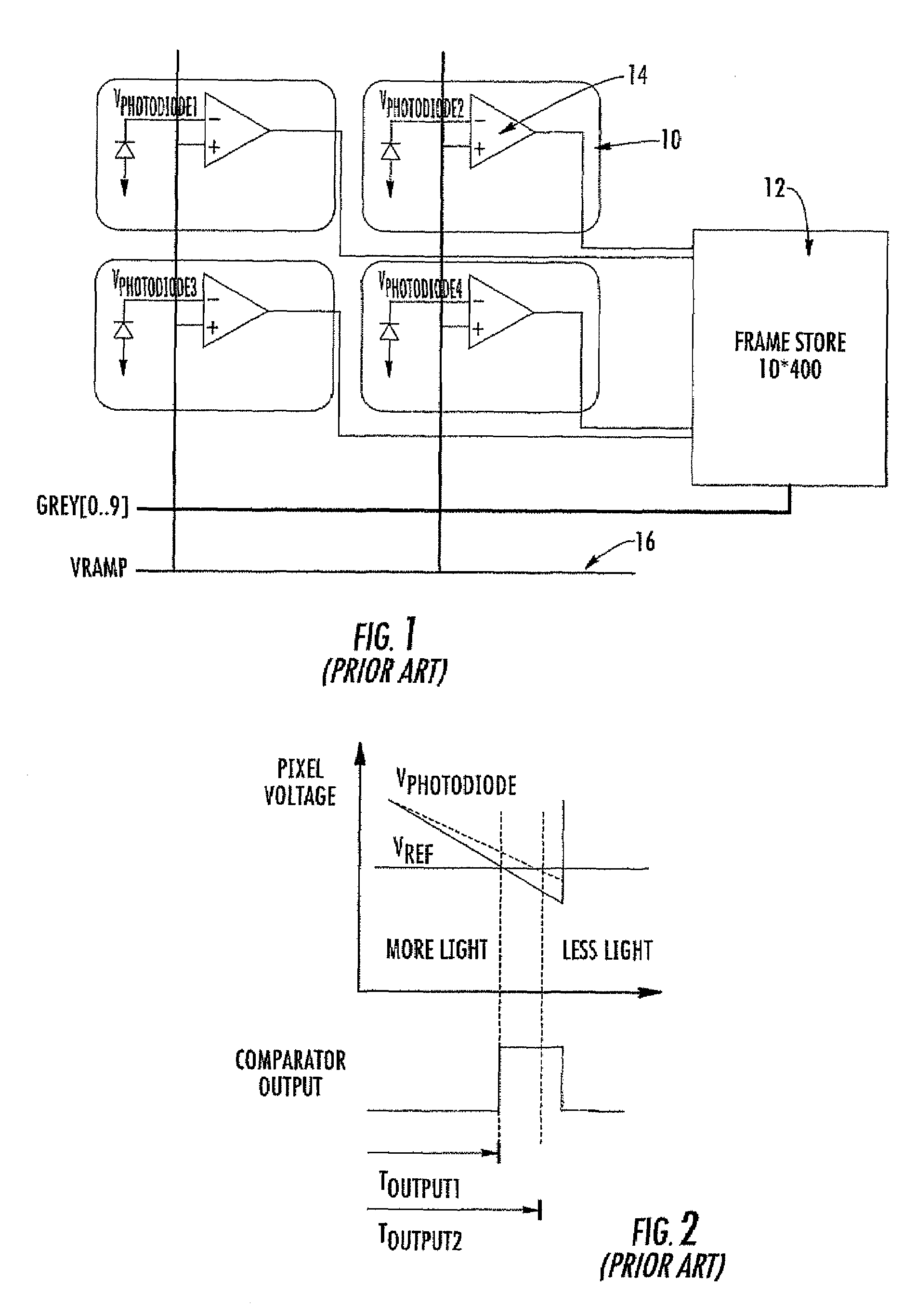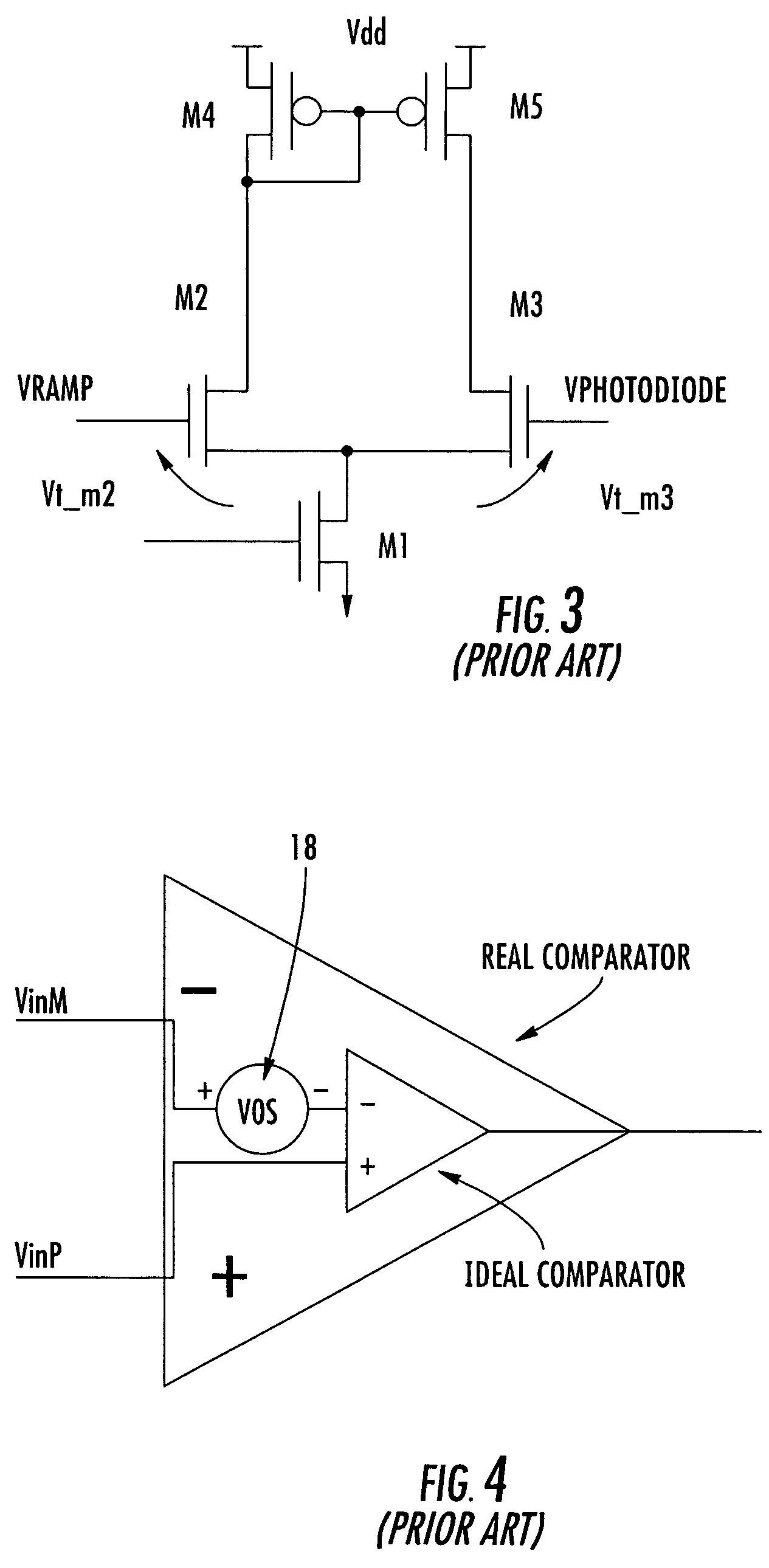Method for image sensor calibration and associated devices
a technology for image sensors and associated devices, applied in the field of image sensors, can solve the problems of reducing the sensitivity of a pixel, and often impractical halving the frame rate, and achieve the effect of reducing the frame rate or reducing the loss of sensitivity
- Summary
- Abstract
- Description
- Claims
- Application Information
AI Technical Summary
Benefits of technology
Problems solved by technology
Method used
Image
Examples
first embodiment
[0036]FIG. 8 illustrates a method for operating an image sensor, in which there are three phases, namely a reset phase, a calibration phase (calibrate) and an integration phase, which comprises sensor exposure and conversion of the incoming signal.
[0037]Phase 1—Reset. During this phase the RESET line (f) goes active and the pixel is reset. Hence, the voltage at the photodiode (a) remains constant. The comparator is not used, so the value of the input Vref (b) is a do not care.
[0038]The time for reset is not critical to this application. The minimum time is determined by how quickly the support circuitry can reset the pixel. The maximum time is determined by the system's frame rate. Typically, the system will use the shortest reset period possible to maximize the frame rate. A practical range for the reset period is 1 μs to 10 μs. At the end of this period the RESET line (f) goes inactive and kTC noise is put onto the pixel.
[0039]Phase 2—Calibration. For high accuracy, there should b...
second embodiment
[0045]FIG. 9 illustrates a method of operating an image sensor, which incorporates a reset phase, a calibration phase, an exposure phase and a conversion phase (convert).
[0046]The reset and calibration phases are similar to those of the first embodiment. However, the exposure and conversion phases are now treated independently rather than as a combined integration phase. This embodiment is suitable for use with an enhanced dynamic-range sensor.
[0047]Phase 3—Exposure. The Vref signal ramps during this phase. The point at which the comparator output changes is now inversely proportional to the light. This function is not linear and has the advantage that for a large amount of light 1 / Light gets smaller, but can never reach zero. The pixel's readout can never saturate. Offset time 40 gives a measure of the pixel's offset.
[0048]Phase 4—Convert. After exposure, the illumination is turned off and the reference voltage then ramps between the black value and white value. Measuring the conve...
PUM
 Login to View More
Login to View More Abstract
Description
Claims
Application Information
 Login to View More
Login to View More - R&D
- Intellectual Property
- Life Sciences
- Materials
- Tech Scout
- Unparalleled Data Quality
- Higher Quality Content
- 60% Fewer Hallucinations
Browse by: Latest US Patents, China's latest patents, Technical Efficacy Thesaurus, Application Domain, Technology Topic, Popular Technical Reports.
© 2025 PatSnap. All rights reserved.Legal|Privacy policy|Modern Slavery Act Transparency Statement|Sitemap|About US| Contact US: help@patsnap.com



